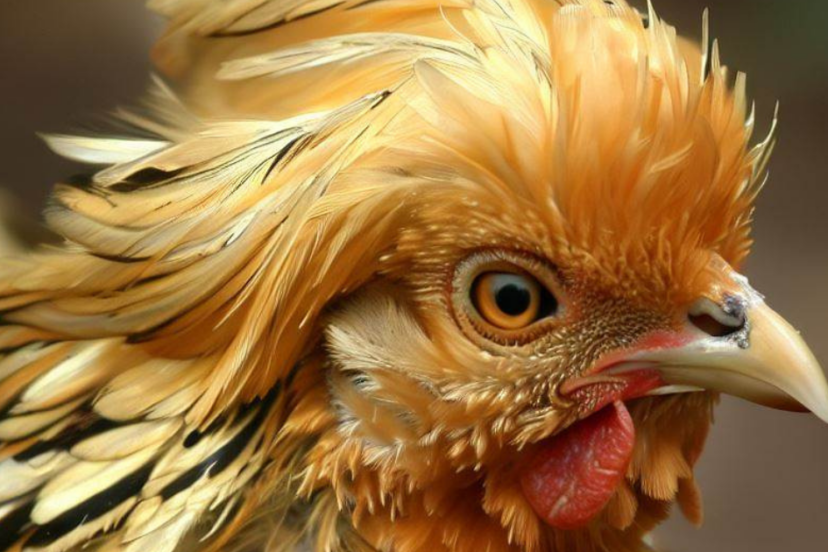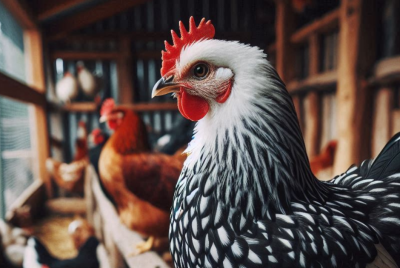Golden Laced Polish Chicken : Unleashing the Beauty of Golden Laced Polish Chickens
When it comes to captivating poultry, few breeds can rival the beauty and charm of the Golden Laced Polish chicken. With their striking appearance and gentle temperament, these birds have captured the hearts of poultry enthusiasts worldwide. In this article, we will delve into the world of Golden Laced Polish chickens, exploring their distinct characteristics, care requirements, egg-laying capabilities, and more.
The Allure of Golden Laced Polish Chickens
Golden Laced Polish chickens are known for their eye-catching plumage and unique crested head. Their feathers boast a stunning golden laced pattern, creating a regal and elegant appearance. These birds are truly a sight to behold, making them a popular choice among poultry enthusiasts and exhibitors.
Characteristics and Appearance
Distinctive Feathering
The Golden Laced Polish chicken’s feathers exhibit a captivating pattern of rich golden hues, intricately laced with black. This striking coloration sets them apart from other chicken breeds and adds a touch of sophistication to any flock.
Crested Head and Coloration
One of the most distinctive features of Golden Laced Polish chickens is their elaborate crested head. The crest consists of a fluffy tuft of feathers that adorns the top of their heads, lending them an air of elegance. Additionally, their heads showcase a combination of black, gold, and white feathers, creating a captivating contrast.
Temperament and Personality
Friendly and Docile Nature
Golden Laced Polish chickens are known for their friendly and docile temperament. They are generally gentle and enjoy human interaction, making them a great choice for families and backyard enthusiasts. Their calm and sociable nature adds a delightful charm to any flock.
Interaction with Other Breeds
Golden Laced Polish chickens usually get along well with other chicken breeds. Their non-aggressive behavior makes them suitable for mixed flocks, allowing for a diverse and harmonious chicken community.
Housing and Environment
Coop Size and Design Considerations
When providing housing, it’s essential to consider their crests. These crests require ample headroom to avoid damage or discomfort. A spacious coop with adequate ventilation and protection from the elements is necessary to ensure their well-being.
Feeding and Watering Requirements
They have similar dietary needs to other chicken breeds. A balanced diet consisting of high-quality chicken feed, supplemented with fresh fruits, vegetables, and occasional treats, will keep them healthy and content. Additionally, providing clean and fresh water is crucial for their overall well-being.
Grooming and Maintenance
Crest Care and Management
The crests require regular care and attention. Proper grooming involves keeping the feathers clean, free from debris, and preventing tangles. Regularly inspect the crest for any signs of matting or obstruction that may impair their vision or cause discomfort
Feather Maintenance Tips
They have long and delicate feathers that may be prone to damage. To maintain their feather quality, avoid rough handling and provide a clean and dry environment. Regularly inspect their feathers for signs of damage or excessive wear and address any issues promptly.
Health and Wellness
Common Health Issues
As with any chicken breed, Golden Laced Polish chickens may be susceptible to certain health issues. Keep an eye out for respiratory infections, external parasites, and egg-laying problems. Regular health checks and prompt veterinary attention can help prevent and address any potential health concerns.
Regular Check-ups and Preventative Measures
To ensure the well-being of your Golden Laced Polish chickens, schedule regular check-ups with a poultry veterinarian. Vaccinations, deworming, and proper biosecurity measures are essential to maintain their health and prevent the spread of diseases. Additionally, provide a clean and hygienic living environment, regular exercise, and a balanced diet to promote their overall well-being.
Breeding and Egg Production
Considerations
Breeding Golden Laced Polish chickens can be a rewarding experience for enthusiasts. When selecting breeding pairs, choose birds with strong and healthy characteristics, including well-defined crests and vibrant plumage. Proper knowledge of genetics and breeding techniques can help maintain and improve the breed’s desirable traits.
Egg-Laying Habits
Golden Laced Polish chickens are moderate egg layers, providing a steady supply of eggs throughout the year. However, their crests may slightly hinder their vision, making them more prone to predation. Providing secure nesting boxes and a calm environment can help alleviate their vulnerability and encourage consistent egg production.
Conclusion
In conclusion, Golden Laced Polish chickens are a splendid addition to any flock, captivating with their stunning appearance and amiable nature. Whether you’re a seasoned poultry enthusiast or a beginner, these birds offer a delightful and rewarding experience. By providing proper care, a suitable living environment, and attention to their unique needs, you can enjoy the beauty and charm of Golden Laced Polish chickens for years to come.
FAQs
1. How do I care for the crests of Golden Laced Polish chickens?
Regularly clean the crests, remove any debris, and gently untangle any knots or matting. Avoid trimming the feathers excessively and ensure the crest has ample space in the coop.
2. Can they be kept with other chicken breeds?
Yes, they are generally compatible with other breeds. Their friendly and non-aggressive nature allows for a harmonious coexistence.
3. Do they require special nutrition?
While they have similar dietary needs to other chickens, providing a balanced diet rich in nutrients is essential. Supplement their feed with fresh fruits, vegetables, and occasional treats.
4. How often do they lay eggs?
They are moderate egg layers, typically laying around 150-200 eggs per year. However, individual variations may occur.
5. What steps should I take to ensure good health?
Schedule regular veterinary check-ups, maintain proper hygiene and biosecurity measures, provide a balanced diet, and address any health issues promptly. Regular observation and care are vital for their well-being.
*We may earn a commission from purchases made through our links, at no cost to you. This does not affect our product recommendations. Please see our disclosure to learn more.




